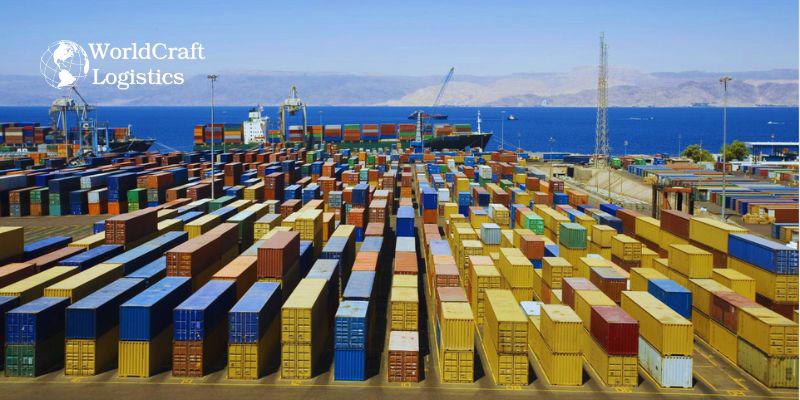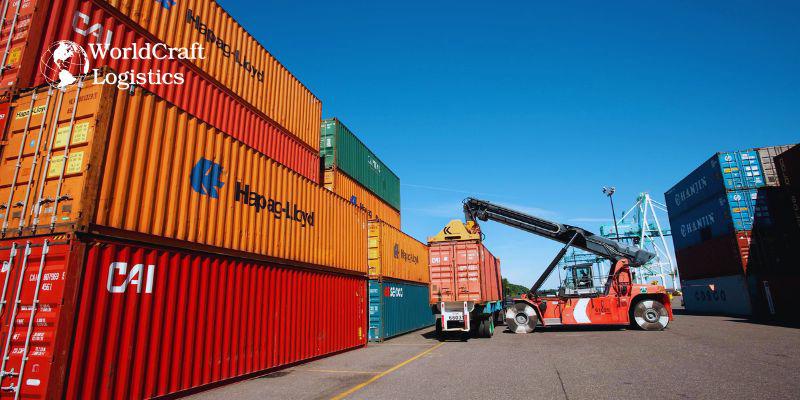
Starting June 1st, 2023 Our warehouse fee will be $0.65/cubic foot per month
In effort to lower the warehouse storage fee during inflation, we have went narrow aisle racking.This construction took us four months but the project is finally completed. With narrow aisle racking, we are able to drop storage by 24%.We as partners will go through this inflation together.
04/15/2024
Recent data from S&P Global Market Intelligence reveals that containerized freight imports bound for the United States saw yearly increases in February, marking the sixth consecutive month of growth after enduring 14 months of annual declines.
In February, imports surged to 2.44 million TEU (Twenty-Foot Equivalent Units), marking a significant 21% rise from the same period in 2023.
In light of the timing of the Lunar New Year and ongoing disruptions in the Red Sea and Panama Canal, the company clarified that imports bound for the United States during the initial two months of 2024 saw a significant uptick. Figures revealed a 14% surge year-over-year, reaching 5.04 million TEU compared to 2023's 4.40 million TEU. This marked a slight decline from 2022's 5.21 million TEU and 2021's 5.09 million TEU.
 See some other related reports:
See some other related reports:
👉 Modal shifts in the Red Sea and an e-commerce push have driven March air volumes up by 11% YoY
👉 Trans-Pacific container prices continue to DECREASE WITHOUT BRAKES
Consumer imports surged in February, marking a notable 22% annual increase, surpassing January's 9% uptick. The spike was primarily driven by demand for leisure products and household appliances. The firm attributed this growth to factors such as destocking during the Lunar New Year a year prior, alongside disruptions in deliveries to the East Coast caused by incidents in the Red Sea and Panama Canal. These occurrences were labeled as "partial drivers" by the firm.
The statement further emphasized that the full extent of delivery interruptions affecting consumer discretionary trade remains uncertain until the height of the shipping season. Additionally, it highlighted the possibility of extended delivery durations to the East Coast by up to two weeks, potentially prompting earlier purchasing decisions and limiting flexibility to meet demand fluctuations later in the peak season.
In January and February, there was a 12% surge in imports of capital goods, according to Rogers, mirroring the global trend of manufacturing rebounding after 18 months of decline. Additionally, the textiles and apparel sector experienced a 5% increase during this period.
S&P Global Market Intelligence Research Director Chris Rogers analyzed the data from January and February, both collectively and individually for February. He emphasized that a significant portion of the data hinges heavily on timing.
"It's not merely the Lunar New Year," he remarked. "This time last year marked the height of the inventory reduction phase, as retailers slashed their stockpiles amid the downturn that commenced in August and September 2022, tapering off only by March 2023. Present figures are now juxtaposed against the subdued conditions of a year ago. Hence, the notable fluctuations observed in the consumer goods sector from the previous year."
A notable surge of 14%, bringing the total to 5.04 million TEU in January and February, signals a substantial recovery. Rogers emphasized that this figure aligns closely with the corresponding period in 2021, which stood at 5.07 million TEU, yet remains notably lower than the peak of 5.21 million TEU witnessed in 2022.

"In March, there's a noticeable shift towards typical figures, yet customers and cargo owners are querying whether earlier shipping is necessary this year for Peak Season," he highlighted. "Cargo owners remain guarded about their strategies. However, for shipments destined for the East Coast, a minimum two-week advance from last year's schedule is advised due to multiple factors."
Factors contributing to the current geopolitical landscape encompass persistent concerns surrounding the Panama Canal and Red Sea, alongside the imminent electoral cycle.
Examining the election outcome, he characterized the results as asymmetric. Concerned stakeholders, apprehensive about potential tariff increases in January and February 2025, are hastening their shipping schedules for both seasonal and non-seasonal cargo. This proactive measure aims to circumvent any seasonal Peak Season congestion.
"There's a significant likelihood of early shipping this year, with a potential leveling off of shipping activity in the subsequent months," he remarked. "However, clarity on these trends may not emerge until around July. That's why I advise keeping a close eye on Chinese export data instead of solely relying on U.S. import figures. Chinese trade data tends to be available earlier and serves as an early indicator due to its proximity to the start of shipping routes. It essentially functions as a canary in the coal mine for the industry."
Content
I am working in-house at Worldcraft Logistics. With my experience as the position, I have written more than 200 knowledge sharing articles, edited new news sections and created interesting video content for the company's Tiktok and Youtube channels.

Hot News
08/05/2024

Hot News
02/23/2023

Hot News
02/23/2023

Hot News
02/06/2023
Hot News
02/07/2023